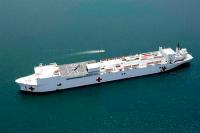 For fans of his “Revolution at Sea Saga,” Jame’s Nelson’s The French Prize is an introduction to the next generation. Isaac Biddlecombe, the Revolutionary War naval hero of the previous saga, has a son, Jack, coming of age in the young American republic. The novel is set during the so-called Quasi-War, an undeclared war fought almost entirely at sea between the United States of America and the French Republic from 1798 to 1800. Jack Biddlecombe is a skilled sailor and ship’s officer, while also a bit of a hot-head and a brawler. He has been given his first command, the merchant ship Abigail, bound for Barbados. Concerned about the danger of French privateers in the West Indies, the ship owner has six pound cannon installed on the deck of the ship. Oddly, the ship owner also happens to be one of his father’s political rivals. As Jack sails for the West Indies, toward the guns of a French warship, he is wholly unaware of the layers of political intrigue that surround the voyage.
For fans of his “Revolution at Sea Saga,” Jame’s Nelson’s The French Prize is an introduction to the next generation. Isaac Biddlecombe, the Revolutionary War naval hero of the previous saga, has a son, Jack, coming of age in the young American republic. The novel is set during the so-called Quasi-War, an undeclared war fought almost entirely at sea between the United States of America and the French Republic from 1798 to 1800. Jack Biddlecombe is a skilled sailor and ship’s officer, while also a bit of a hot-head and a brawler. He has been given his first command, the merchant ship Abigail, bound for Barbados. Concerned about the danger of French privateers in the West Indies, the ship owner has six pound cannon installed on the deck of the ship. Oddly, the ship owner also happens to be one of his father’s political rivals. As Jack sails for the West Indies, toward the guns of a French warship, he is wholly unaware of the layers of political intrigue that surround the voyage.
In addition to duels, storms, and battles at sea, Nelson gives Jack Biddlecome an engaging passenger for the trip in the form of William Wentworth, of the “Boston Wentworths”, the son of wealth and position, who seems in equal parts amused, annoyed and intrigued by the young captain. When they aren’t literally trying to kill each other, they become allies of sorts. I would not be surprised to see William Wentworth in future books of the series. The French Prize is a fun and engaging read.

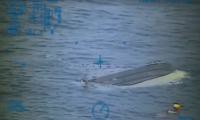 On Friday, two 14 year old boys went missing in the Atlantic off Jupiter, FL. Their 19′ boat was found capsized on Sunday night. The Coast Guard, and now the Navy, is continuing the search for the teens, Austin Stephanos and Perry Cohen.
On Friday, two 14 year old boys went missing in the Atlantic off Jupiter, FL. Their 19′ boat was found capsized on Sunday night. The Coast Guard, and now the Navy, is continuing the search for the teens, Austin Stephanos and Perry Cohen.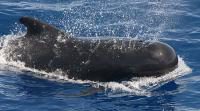 Around the world, pollution is a serious threat to whales. Ironically, on the Faroe Islands, pollution may help to curtail whaling, where protests have failed. The residents of the Faroe Islands in the North Atlantic have been
Around the world, pollution is a serious threat to whales. Ironically, on the Faroe Islands, pollution may help to curtail whaling, where protests have failed. The residents of the Faroe Islands in the North Atlantic have been  Back in 2011, we
Back in 2011, we 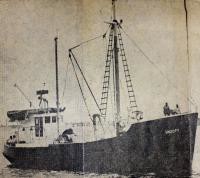 Fifty one years ago this week, on July 23, 1964, the scallop trawler Snoopy was trawling off Currituck Sound, NC. During World War II that stretch of the coast earned the grim nickname,
Fifty one years ago this week, on July 23, 1964, the scallop trawler Snoopy was trawling off Currituck Sound, NC. During World War II that stretch of the coast earned the grim nickname, 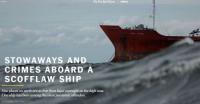
 I have long been a fan of Lucy Bellwood. A tall ship sailor and cartoonist; she is talented, smart and funny. Her wonderful series,
I have long been a fan of Lucy Bellwood. A tall ship sailor and cartoonist; she is talented, smart and funny. Her wonderful series, 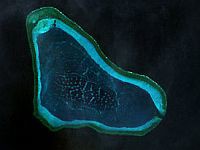 What’s in a name? Google has
What’s in a name? Google has 
 Was the wreck of three-masted bark,
Was the wreck of three-masted bark, 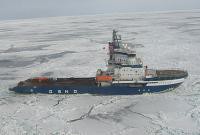 In 2012, Shell’s attempt to drill in the Chukchi Sea in the Alaska’s Arctic proved to be an expensive and dangerous farce, featuring groundings, equipment failures, explosions and citations for safety violations. Returning two years later with an flotilla of 29 ships, Shell’s fortunes have not improved. Rather than discovering oil, the 380-foot
In 2012, Shell’s attempt to drill in the Chukchi Sea in the Alaska’s Arctic proved to be an expensive and dangerous farce, featuring groundings, equipment failures, explosions and citations for safety violations. Returning two years later with an flotilla of 29 ships, Shell’s fortunes have not improved. Rather than discovering oil, the 380-foot  Congratulations to Captain Kate McCue. This August,
Congratulations to Captain Kate McCue. This August, 